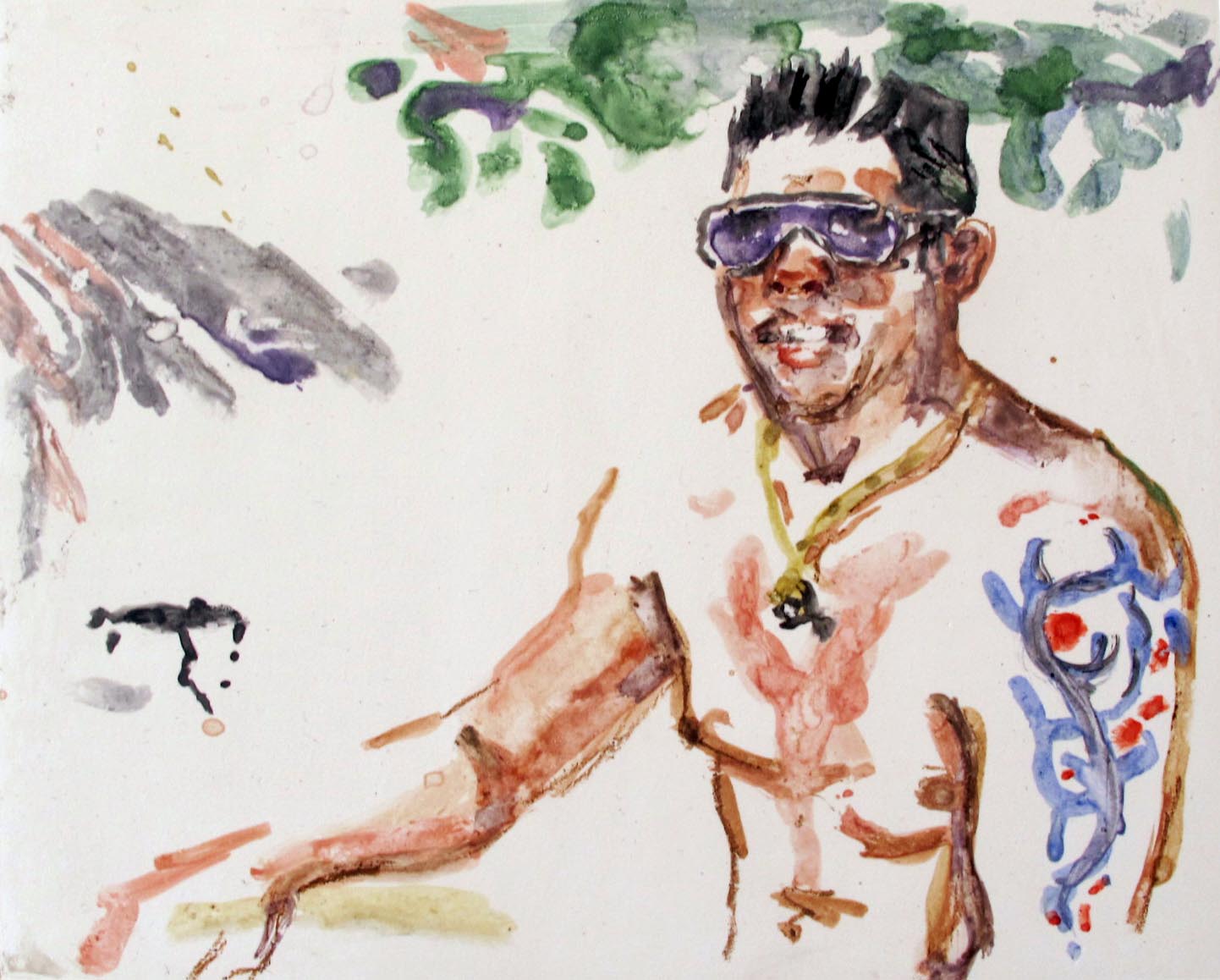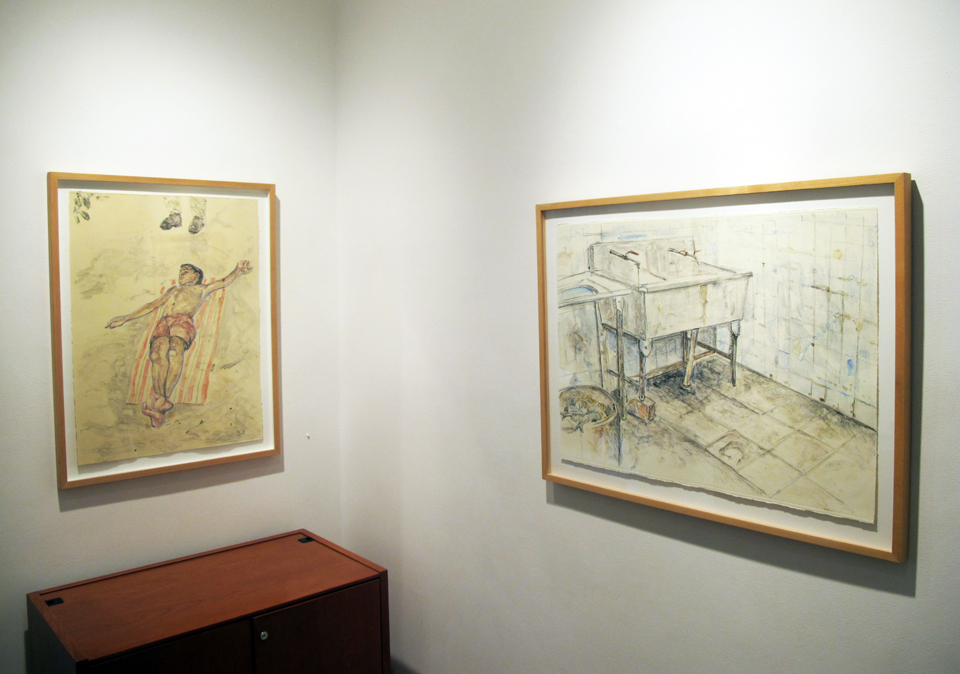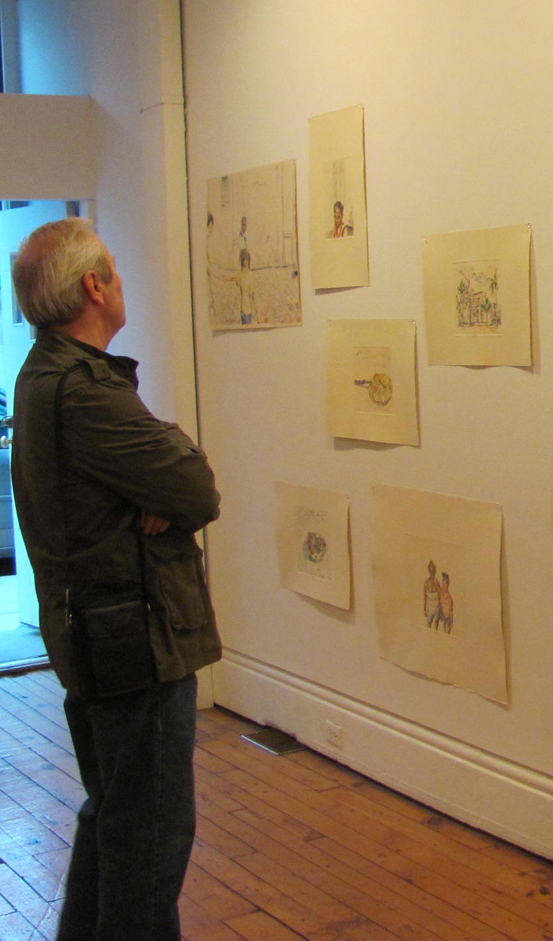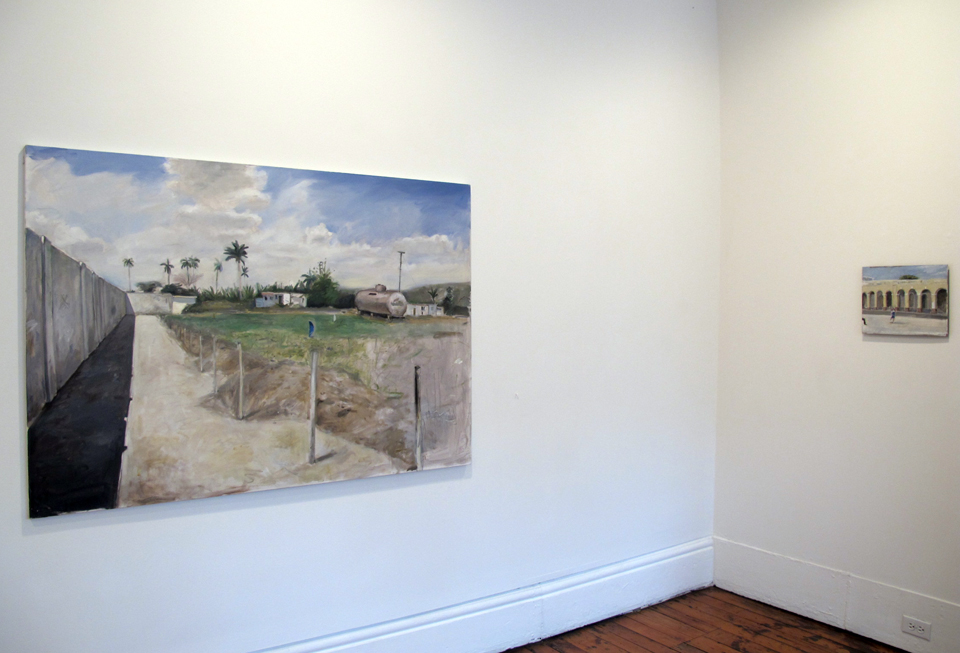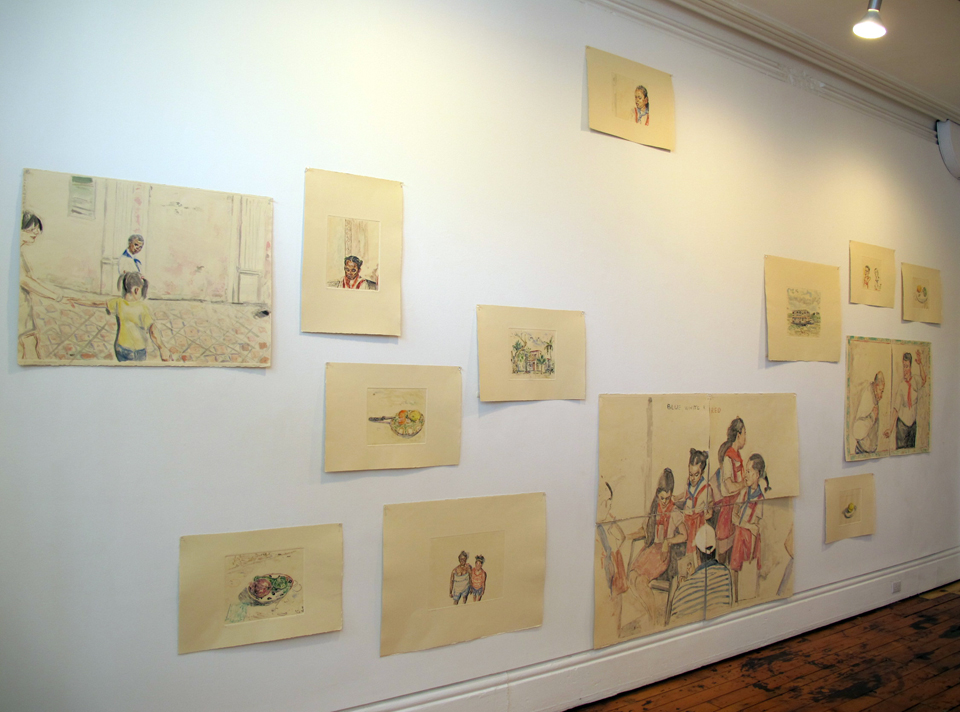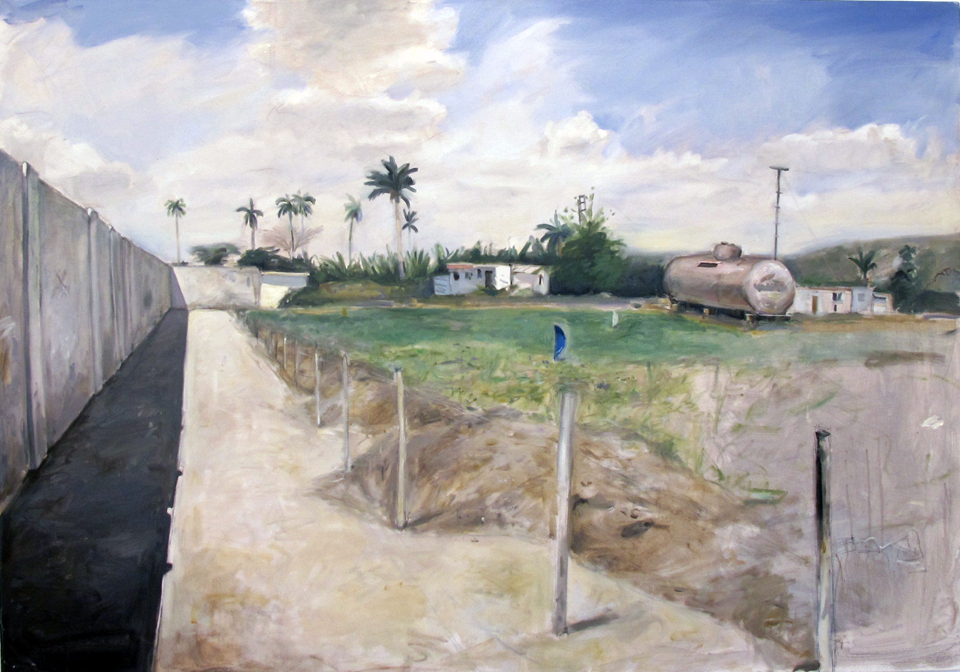I am Cuba
Sadko Hadžihasanović
June 10 - July 9, 2011

I Am Cuba (1964) directed by Mikhail Kalatozov and partially written by renowned poet Yevgeny Yevtushenko captures Cuba just before it made the transition to post-revolutionary society, moving between city and countryside, wealthy foreigners and peasant farmers, ease and disease. These tensions exist today with Cuba’s separate tourist economy and the perception of tourists as voyeurs of poverty once they venture off the resort and into town where the real Cuba and the subjects in Sadko’s work exist.
For his three-part exhibition Future King of England at our gallery in June 2004 Sadko juxtaposed images of Prince William and Hollywood male idols with Che Guevara in an exploration of wealth, power and status.
In an accompanying essay by Nery Espinoza Quevedo and Ingrid Mayrhofer, they comment,
"(In 1967) Che was executed by the Bolivian army at age 39 only to live on as a symbol for revolutionary heroism of mythical proportions in Cuba and for the international left.
"The myth of the hero may well be a legacy of romanticism as Octavio Paz suggests, but the myth of Che Guevara is also a reality for generations of rebels and their nostalgia for Che´s vision expresses a yearning for a better future."
Sadko and his wife Jelica left war-torn Sarajevo for Toronto in 1993.
Sadko writes, "...my first visits to Cuba happened in the end 90s. They were strictly tourist trips with my family inspired by Ry Cooder and the Buena Vista Social Club. We ran there to experience an exotic paradise. In the beginning I was impressed by the beauty of the place, but gradually I realized that I loved Cuba because I was feeling like coming back home. Little details from their communist environment brought me back to my childhood.
"I was raised in Tito's Yugoslavia, country quite different from rest of the communist block. We had social programmes from the East such as free education and medical system, but artistic freedom from the West. We could travel Europe, read translated books from English such Susan Sontag and Salman Rushdie and visit the Biennale in Venice in 1986 and 1988. To have the title artist was appreciated in our community and I was simply an artist – I did not need to work as teacher for living, even I got studio from Government.
"Being in Cuba was sort of nostalgic trip to past. In same time I thought that I escape to south for same reason as Gauguin went to Tahiti or Van Gogh to south France. It was probably a desire to find sun and colours - inspiration lost in urban life. In 2008 I went to Cienfuegos, Cuba with artist from Hamilton as part of Remix project. It came as a big surprise for me to discover a different side of Cuba – dark side of the moon - as result of their communist system.
"In the last 3 years I have produced new works: oils and monotypes. They became a mix of all these fascinations about Cuba, a mix of exotic experience, nostalgia, memories, the idea of déjà vu in painting as historic continuity, a mix of hate and love."
Since his arrival in Toronto in 1993 Sadko Hadzihasanovic has participated in over fifty exhibitions in public galleries and artist-run centres across Canada and has returned numerous times for exhibitions in the former Yugoslavia. He studied at the Academy of Fine Arts in Sarajevo, Bosnia, and earned his MFA at the University of Belgrade, Yugoslavia (1984). He is the recipient of grants from the Ontario Arts Council and the Canada Council for the Arts and maintains teaching positions in Toronto and Guelph, Ontario.
For the complete text by Nery Espinoza Quevedo and Ingrid Mayrhofer, please see http://www.paulpetro.com/arc/sadko/2004.php
(On the occasion of Sadko’s upcoming show I am Cuba the artist invites independent curator and art writer Sally Frater to write about the work. In 2006 she included his work in group show The Life and Death of I.D. at McMaster Museum of Art in Hamilton. Last year Sally Frater wrote an essay, Made in Paris for his solo show at You Me Gallery, Hamilton.)
In Sadko Hadzihasanovic’s artist statement to his latest body of work, I Am Cuba, the artist recalls how he was first drawn to the Caribbean island due to romanticized notions. Seduced by the sounds and sights of the film and soundtrack of The Buena Vista Social Club the artist began to vacation there in the late nineties. Finding that he was at first “impressed by the beauty of the place, but gradually I realized that I loved Cuba because I was feeling like coming back home”, Hadzihasanovic later comes to the realization that his first impressions of Cuba were formed by his not having a sense of the complexities of the nation. His experience as a tourist (and choice of vacation spots) shielded him from the economic disparities in the island as a result of its socialist political system. Met with this new reality, Hadzihasanovic’s understanding of the country changed. His shift in perception is reflected in his recent oil paintings and monotype prints, as well as illustrating the ongoing engagement with art history that occurs in his practice.
The works in I Am Cuba resemble sketches in an artist’s book though they are on a much grander scale than what would be found in one. We are presented with renderings of a vacation in a tropical setting, and to those unfamiliar with the Caribbean a first glance would not necessarily leave one able to discern the location. What appears to be a wall mural containing an image of Jean Michel Basquiat, appears alongside images of other figures reclining in the sun. One work displays a group of women whose composition recalls Le dejeuner sur L’herb, a work referenced by Hadzihasanovic in earlier works.
Though Hadzihasanovic states that what he holds for the country now is both a mixture of love and hate, his images don’t necessarily reveal contempt. The wispy lines and watery colours reveal a purview of the island that is perhaps more accurate than the romanticized lens that he regarded the isle with before. The landscapes within the scenes are still pretty, and the faces of the figures within the works, while they don’t necessarily seem to be ecstatic aren’t necessarily disgruntled either. Instead, the monotypes convey a certain poignancy. In one print a boy lays on the beach stretched out on a towel, his elongated form underscored by a piece of driftwood that lays beside him on the sand. In the background, military planes fly overhead and men in uniform patrol the grounds from behind barbed wire. In yet another work two men stand side by side on what appears to be either a balcony or terrace. One figure holds a garbage can while the other carries a type of stand over his right shoulder, the pointed head of the apparatus resembling a missile. One work features the interior of a room with a stainless steel double sink that has one tap running. Though the room cannot be said to be in disarray it is certainly in a state of disrepair one leg of the sink is propped up on a broken brick, the decay of the setting conveyed through faint splotches on the wall and dark cross hatching on floor underneath the sink. This is how the artist reveals his critique of communism, through the subtle details that seep through and unsettle our otherwise pleasant experience of the work.
Included with these prints are a series of prints by Hadzihasanovic that confront the aging process. In one work, titled Hot Flash, we see the artist lying on his back in the sun with a can of Cristal beer against his forehead. A series of six Warholesque prints of the artist’s face depict him from a less than flattering vantage point, revealing sagging skin and double chins, the expression on his face a troubled one. It is here that the works break with the other works in the exhibition. Perhaps it is at this juncture that we witness the contempt of which Hadzihasanovic wrote in his artist statement. His words lead us to believe that he is disgusted by the socialist system that underpins Cuba. Yet at the same he is very much aware that it is this same type of framework that, in the former Yugoslavia, saw to elevate his stature in society as an artist. The disdain that we see in his face could be his frustration over the fact each situation, whether aging, immigration, or socialism, contains both loss and gain. That he could travel so far across the world in an effort to transcend or escape a particular set of circumstances only to be met with the fact of the impossibility of escaping our pasts, that the yin and yang is what holds everything in the balance, that one has to ultimately learn to accept both and therein lies the rub.
- Sally Frater, 2011
Sally Frater holds a BA in Studio Arts from the University of Guelph, a post-graduate diploma in Museum Management and Curatorship from Fleming College and an MA in Contemporary Art from Sotheby’s Institute of Art/The University of Manchester. As an independent curator and writer, she has curated exhibitions at A Space Gallery, The Art Gallery of Peterborough, the McMaster Museum of Art and The Print Studio and her writing has appeared in Border Crossings Magazine, Fuse, C Magazine, Blackflash, NKA and Canadian Art. She has received grants from the Ontario Arts Council and the Canada Council for the Arts. She is a member of IKT, the International Association of Contemporary Curators.








